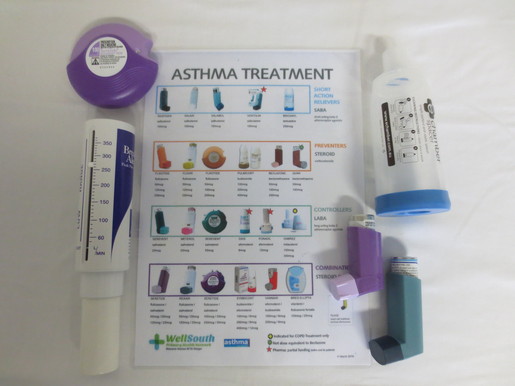Asthma

Asthma is a common disease to present in General Practice. It affects one in seven children in New Zealand and respiratory diseases in general affect one in six adults. respiratory disease is the third most common cause of death in New Zealand, and New Zealand has one of the highest rates of asthma in the world.
Asthma can take different forms presenting at different times and with different symptoms, the most common of these being:- a dry cough, more common at night, breathlessness, wheeze and a tight sensation in the chest. These symptoms result from a combination of muscle tightness squeezing the airway, mucous build up and swelling of the lining of the airway. Understanding this helps to explain the different treatments that can be offered. The cause of asthma in an individual is sometimes not known but the ability to identify and then avoid the so called triggers a person might have is the first stage of treatment. More common ones might include colds or flus, cigarette smoke,different weather, pets particularly furry ones, stress and for some physical exercise. Some of the ways of monitoring the effects of these are, symptoms diaries and peak flow diaries. The latter being a measurement of the maximum rate of of exhaling air, this is relatively easy to measure with an inexpensive PF meter available from your local GP or practice nurse.
After avoiding triggers the next step in treatment is often the use of inhalers. Either in the from of a metered dose inhaler, MDI, which takes the form of a spray. Or a dry powder inhaler, that that is activated by the action of sucking on it. Both forms can be very effective, if using an MDI I usually recommend a spacer device, a plastic bottle, that improves the delivery of the medication. The contents of the inhalers also varies, initially a reliever might be tried, often blue in colour and lasting for a few hours only, they work relatively quickly and can give excellent short term relief. For patients with more persistent symptoms a preventer would be appropriate, ofter orange or brown in colour . These inhalers are much slower in there action often taking 2-3 weeks to make an impact, they work on the mucous and swollen lining and have a much longer effect. If this proves insufficient and longer acting muscle relaxant medication know as a LABA may be added. Ofter a light green colour . The last commonly used group are combinations of the last two, giving people relief on the first day they use them but also giving extra relief over time.
Asthma is certainly more common during the winter months and discussing with your GP or practice nurse which inhalers are best and when during the year to taking them is a valuable way to treat asthma
